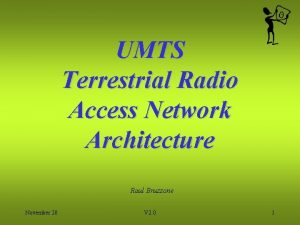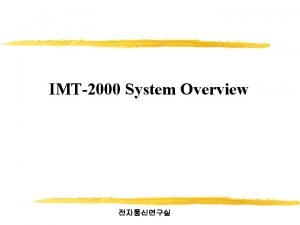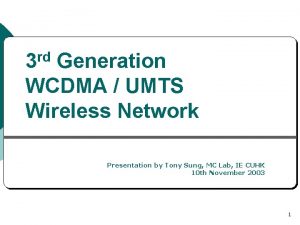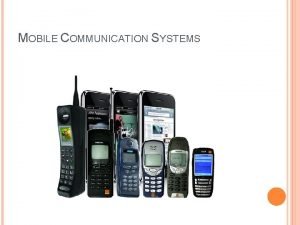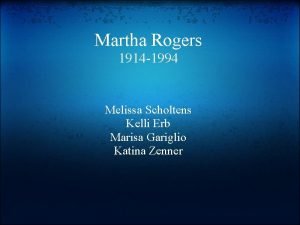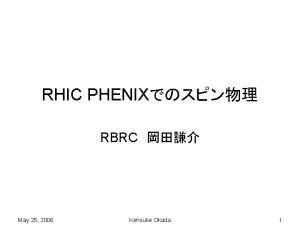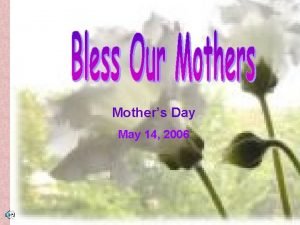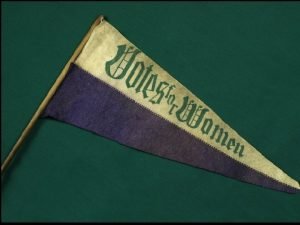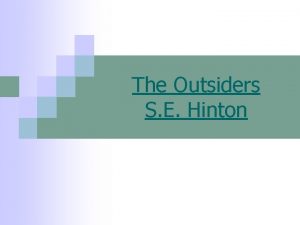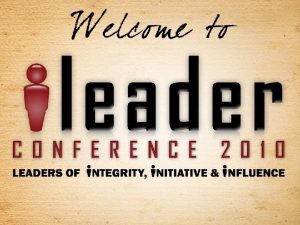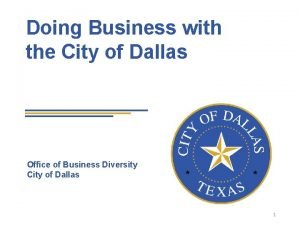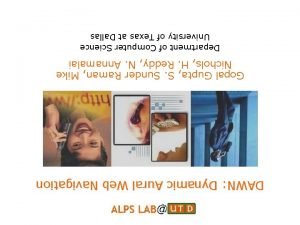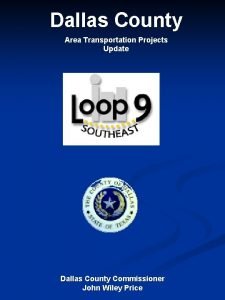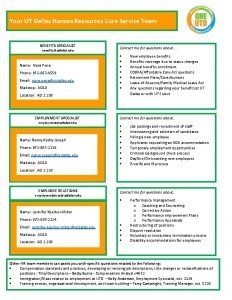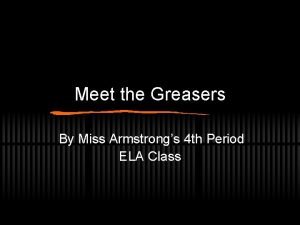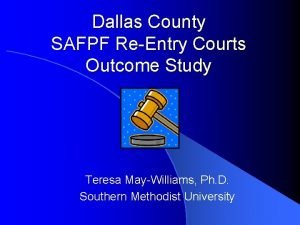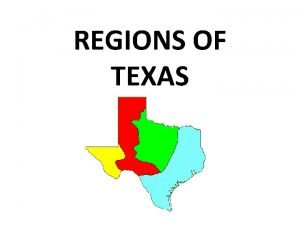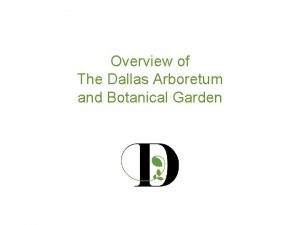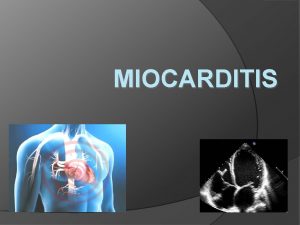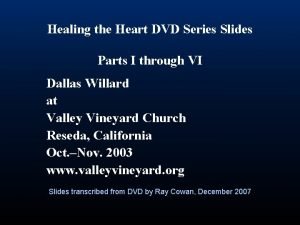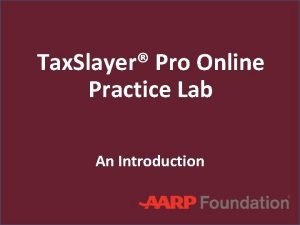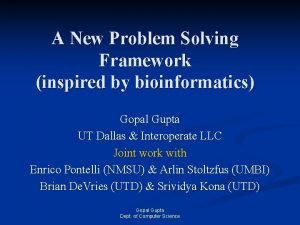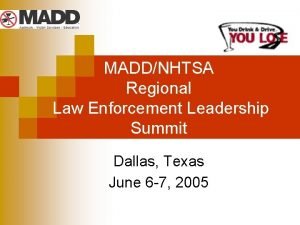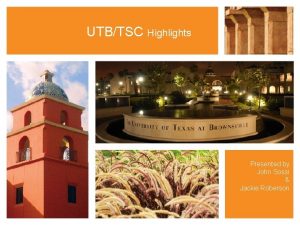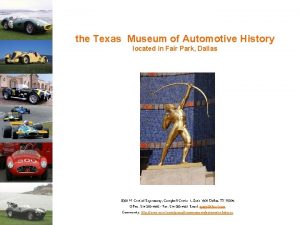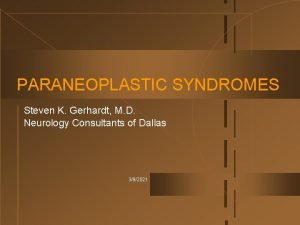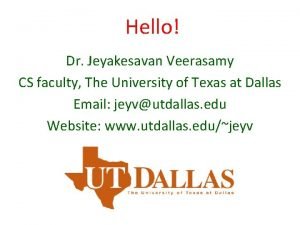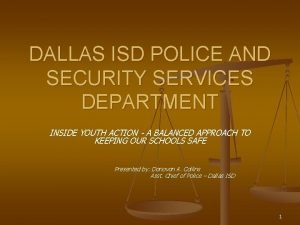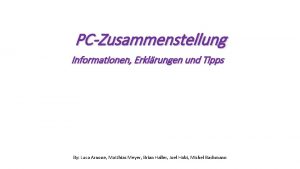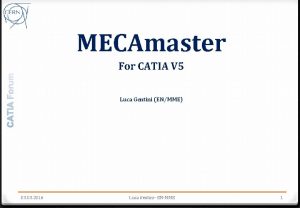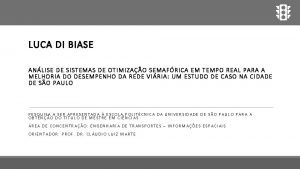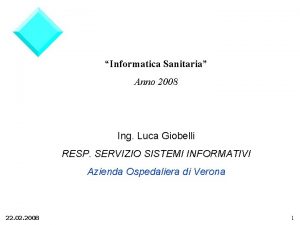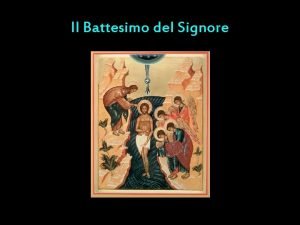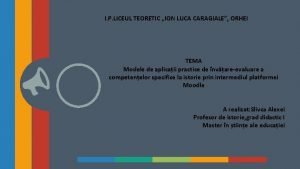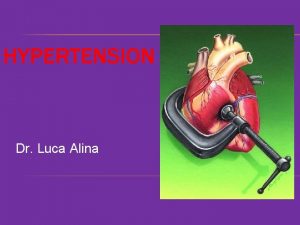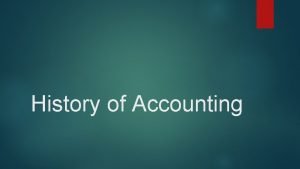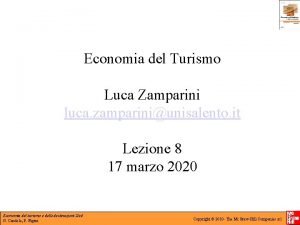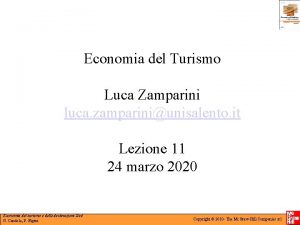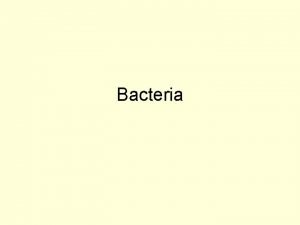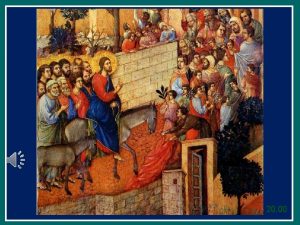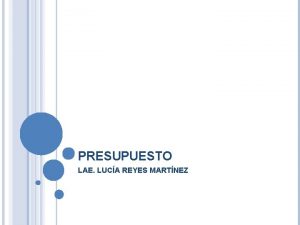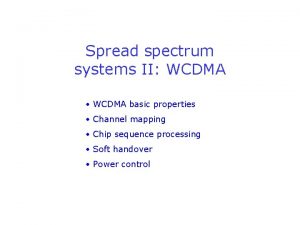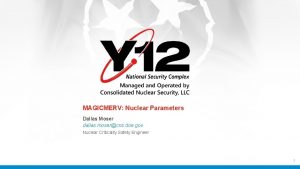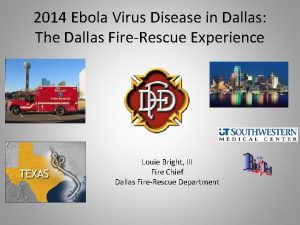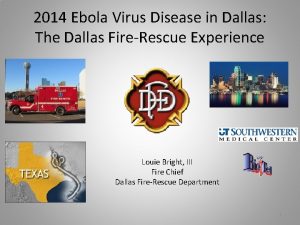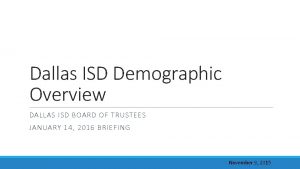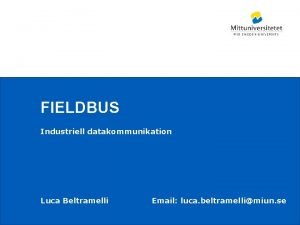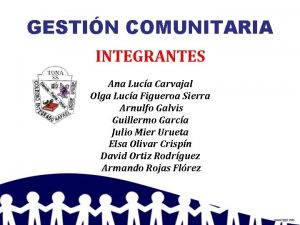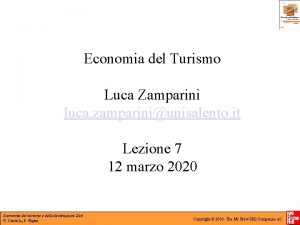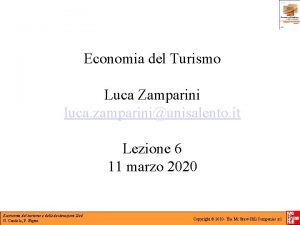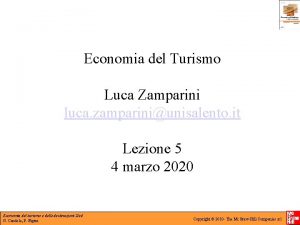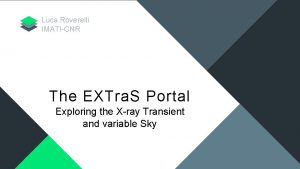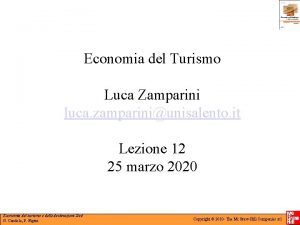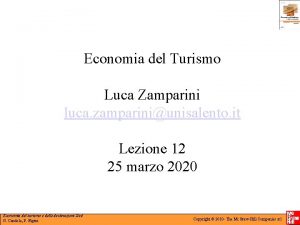WCDMA Theory Dallas 04 May 2006 luca lunardiericsson




































































- Slides: 68

WCDMA Theory Dallas – 04 May 2006 luca. lunardi@ericsson. com

Agenda § § § § § UTRAN architecture Multiple access techniques (DS-CDMA) Spreading codes (Channelisation and Scrambling) Fast link adaptation (Power and Rate control) Soft Handover Capacity limitation and cell breathing Rake receiver UE states Services (Bearers) Channels in WCDMA (logical, transport, physical) Ericsson Confidential 2 2006 -05 -02

UTRAN Architecture OSS Ericsson Confidential 3 2006 -05 -02

Agenda § § § § § UTRAN architecture Multiple access techniques (DS-CDMA) Spreading codes (Channelisation and Scrambling) Fast link adaptation (Power and Rate control) Soft Handover Capacity limitation and cell breathing Rake receiver UE states Services (Bearers) Channels in WCDMA (logical, transport, physical) Ericsson Confidential 4 2006 -05 -02

Multiple access techniques Ericsson Confidential 5 2006 -05 -02

Direct Sequence - Code Division Multiple Access (DS-CDMA) • Separate users through different codes • Large bandwidth • Continuous transmission and reception t MS 1 MS 2 MS 3 Code • WCDMA (5 MHz) • IS-95 (1. 25 MHz) f • CDMA 2000 (1. 25, 3. 75 MHz) 5 MHz Ericsson Confidential 6 2006 -05 -02

Agenda § § § § § UTRAN architecture Multiple access techniques (DS-CDMA) Spreading codes (Channelisation and Scrambling) Fast link adaptation (Power and Rate control) Soft Handover Capacity limitation and cell breathing Rake receiver UE states Services (Bearers) Channels in WCDMA (logical, transport, physical) Ericsson Confidential 7 2006 -05 -02

Spreading principle ü User information bits are spread into a number of chips by multiplying them with a spreading code üThe chip rate for the system is 3. 84 Mchip/s and the signal is spread in 5 MHz üThe Spreading Factor (SF) is the ratio between the chip rate and the symbol rate üThe same code is used for de/spreading the information after it is sent over the air interface Information signal Spreading signal Transmission signal Ericsson Confidential 8 2006 -05 -02

Spreading principle Case 1 +1 0 -1 Spreading +1 0 -1 1 11 001100 User data Spreading code +1 0 -1 Chip sequence Despreading +1 0 -1 0 +1 0 -1 11 001100 +1 0 -1 Case 2 +1 0 -1 101 01010 +1 0 -1 Ericsson Confidential 9 2006 -05 -02

Channelization Codes ü In the Downlink Channelization Codes are used to distinguish between data (and control) channels coming from the same RBS CC 1, CC 2 CC 3, CC 4 CC 5, CC 6, CC 7 ü In the Uplink Channelization Codes are used to distinguish between data (and control) channels from the same UE CC 1 , CC 2, CC 3 CC 1, CC 2, CC 3, CC 4 Ericsson Confidential 10 2006 -05 -02

Channelization Codes ü Channelization Codes have different length depending on the bit rate ü A physical channel may use a certain code in the tree if no other physical channel uses a code from an underlying branch. Ericsson Confidential 11 2006 -05 -02

Channelization Codes The bit stream is spread into a constant chip rate of 3. 84 Mchip/s Ericsson Confidential 12 2006 -05 -02

Channelization Codes üChannelization codes are orthogonal (but only if they are synchronized) üOrthogonal codes have perfect (100%) separation Ericsson Confidential 13 2006 -05 -02

Scrambling Codes ü After the Channelization Codes, the data stream is multiplied by a special code to distinguish between different transmitters. ü Scrambling codes are not orthogonal so they do not need to be synchronized ü The separation of scrambling codes is proportional to the code length – longer codes, better separation (but not 100%) ü Scrambling codes are 38400 chips long Ericsson Confidential 14 2006 -05 -02

Scrambling Codes ü In the Downlink, the Scrambling Codes are used to distinguish each cell (assigned by operator – SC planning) ü In the Uplink, the Scrambling Codes are used to distinguish each UE (assigned by network) Cell “ 1” transmits using SC 1 SC 3 SC 4 Cell “ 2” transmits using SC 2 SC 5 Ericsson Confidential SC 6 15 2006 -05 -02

Spread Spectrum gain Ericsson Confidential 16 2006 -05 -02

Downlink Scrambling Codes Ø Used to distinguish Base Station transmissions on Downlink § Each Cell is assigned one and only one Primary Scrambling Code (of 512) § Secondary Scrambling Codes may be used over part of a cell, or for other data channels 8192 Downlink Scrambling Codes Each code is 38, 400 chips of a 218 - 1 (262, 143 chip) Gold Sequence Code Group #1 Code Group #64 Primary SC 0 Primary SC 7 Primary SC 504 Primary SC 511 Secondary Scrambling Codes (15) Ericsson Confidential 17 2006 -05 -02

Scrambling Code planning Ø SC are organized in Code Groups. Ø The first SC in each Code Group differs from the first SC in the subsequent Code Group by a multiple of 8 64 Code Groups Ericsson Confidential 18 2006 -05 -02

Scrambling Code planning example SC 48 SC 64 SC 0 SC 16 SC 56 SC 40 SC 8 SC 49 SC 24 SC 1 SC 32 SC 17 SC 65 SC 57 SC 41 SC 9 SC 25 SC 33 Ericsson Confidential 19 2006 -05 -02

Uplink Scrambling Code Type depends on the Application Random Access, Packet Access Dedicated Traffic Connection • Cell-specific Scrambling Code(s) • UE-specific Scrambling Code(s) • Code(s) are assigned by UTRAN • Code(s) are conveyed to UE via the BCH or FACH • Code(s) are conveyed to UE via the FACH • 224 possible codes • 8, 192 PRACH codes • 32, 768 PCPCH codes • Code allocation corresponds to the cell’s DL scrambling code group Ericsson Confidential 20 2006 -05 -02

Channelization and Scrambling Codes Pilot, Broadcast Voice Conversation SC 1 + CCP + CCB 2 data channels (voice, control) SC 1 + CC 2 1 data channels (control) SC 1 + CC 3 Uplink Packet Data 2 data channels (14 kbps data, control) SC 4 + CC 1 + CC 2 2 data channels (voice, control) SC 3 + CC 1 + CC 2 Pilot, Broadcast SC 2 + CCP + CCB Videoconference 3 data channels (voice, video, control) SC 2 + CC 1 + CC 2 + CC 3 4 data channels (384 kbps data, voice, video, control) SC 2 + CC 4 + CC 5 + CC 6 + CC 7 3 data channels (voice, video, control) SC 5 + CC 1 + CC 2 + CC 3 Ericsson Confidential Videoconference with Data 4 data channels (384 kbps data, voice, video, control) SC 6 + CC 1 + CC 2 + CC 3 + CC 4 21 2006 -05 -02

Agenda § § § § § UTRAN architecture Multiple access techniques (DS-CDMA) Spreading codes (Channelisation and Scrambling) Fast link adaptation (Power and Rate control) Soft Handover Capacity limitation and cell breathing Rake receiver UE states Services (Bearers) Channels in WCDMA (logical, transport, physical) Ericsson Confidential 22 2006 -05 -02

Fast link adaptation § Radio channel conditions varying significantly due to: – – – Different location Interference level (position and transmission activity) Multi-path fading UE speed. . . § Goal: ensure sufficient received energy per information bit for all communication links § Power control strategy (Rel. 99): adjust transmitted power while keeping the data rate constant § Rate control strategy (Rel 5): adjust the data rate while keeping the transmitted power constant Ericsson Confidential 23 2006 -05 -02

Power control § § Power control is the most important element in WCDMA because many users access and use the same frequency and bandwidth at the same time If no mechanism for the UEs to be power controlled to the same level at the RBS, the UE that is closer to the base station could easily overshoots another UE at the cell border and block a large part of the cell (near-far problem) The signals received by the RBS serving different UEs should be the same independently from their location (pathloss condition) Three types of power control: – Open loop: used for initial power setting of the UE at the beginning of the connection – Inner loop: used in connected mode (Rel 99) to ensure that the UE transmits just enough to be received to avoid unnecessary interference to other users. It compensates for fast fading – Outer loop: used in connected mode (Rel 99) to keep the quality of communication at the required level Ericsson Confidential 24 2006 -05 -02

Power control vs data rate adaptation Rel ’ 99 traffic Ericsson Confidential Rel 5 traffic (HSDPA) 25 2006 -05 -02

Dynamic power allocation Ericsson Confidential 26 2006 -05 -02

Agenda § § § § § UTRAN architecture Multiple access techniques (DS-CDMA) Spreading codes (Channelisation and Scrambling) Fast link adaptation (Power and Rate control) Soft Handover Capacity limitation and cell breathing Rake receiver UE states Services (Bearers) Channels in WCDMA (logical, transport, physical) Ericsson Confidential 27 2006 -05 -02

Soft Handover ü Soft/softer handover is important for efficient power control. Without soft/softer handover there would be near-far scenarios of a UE penetrating from one cell deeply into an adjacent cell without being power controlled by the latter. ü Soft Handover: UE connected to two or more RBSs at the same time ü Softer Handover: UE connected to two or more sector of the same RBS Ericsson Confidential 28 2006 -05 -02

Soft Handover ü Uplink Power is based on information (TPC bits) from both RBSs to which the UE is connected. The UE will decrease its output power in all cases except when both RBSs send increase power commands. ü Downlink Power control for both RBSs is based on one signal (TPC bits) from the UE (it does not distinguish between RBSs and the decision is base on the combined output from the RAKE receiver DL Power control UL Power control Ericsson Confidential 29 2006 -05 -02

Soft Handover Ericsson Confidential 30 2006 -05 -02

Agenda § § § § § UTRAN architecture Multiple access techniques (DS-CDMA) Spreading codes (Channelisation and Scrambling) Fast link adaptation (Power and Rate control) Soft Handover Capacity limitation and cell breathing Rake receiver UE states Services (Bearers) Channels in WCDMA (logical, transport, physical) Ericsson Confidential 31 2006 -05 -02

UL/DL capacity limitation § Scenario 1: Capacity limitation due to UL interference – § The cell can’t serve UE 1 because the increase in UL interference by adding the new user would be too high, resulting in a high risk of drops Scenario 2: Capacity limitation due to DL power – The cell can’t serve UE 2 because it’s using all its available power to maintain the connections to the other UEs Scenario 2 Scenario 1 UE 2 Ericsson Confidential 32 2006 -05 -02

Cell breathing ü The more traffic, the more interference and the shorter the distance must be between the RBS and the UE ü The traffic load changes in the system causes the cells to grow and shrink with time RBS 1 RBS 2 Fully loaded system Unloaded system Ericsson Confidential 33 2006 -05 -02

Agenda § § § § § UTRAN architecture Multiple access techniques (DS-CDMA) Spreading codes (Channelisation and Scrambling) Fast link adaptation (Power and Rate control) Soft Handover Capacity limitation and cell breathing Rake receiver UE states Services (Bearers) Channels in WCDMA (logical, transport, physical) Ericsson Confidential 34 2006 -05 -02

Maximum ratio combining (1/2) ü Multiple paths possibly cause destructive interference between different replica of the desired signal Multipath Propagation Time Dispersion t 2 t 0 t 3 t 1 t 0 t 1 t 2 t 3 Ericsson Confidential 35 2006 -05 -02 t

Maximum ratio combining – RAKE (2/2) ü The RAKE receiver is used to overcome the multipath fading. Each finger tracks a different multipath component and other cells during Soft Handover ü A maximum ratio combining produces the output Buffer/delay Correlators Channel Finger #1 C O Finger #2 M B Finger #3 Sum of individual multipath components I N E Finger #N Searcher Finger Ericsson Confidential 36 R Power measurements of neighbouring RBSs 2006 -05 -02

Agenda § § § § § UTRAN architecture Multiple access techniques (DS-CDMA) Spreading codes (Channelisation and Scrambling) Fast link adaptation (Power and Rate control) Soft Handover Capacity limitation and cell breathing Rake receiver UE states Services (Bearers) Channels in WCDMA (logical, transport, physical) Ericsson Confidential 37 2006 -05 -02

UE states UTRA RRC Connected Mode GSM: Handover UTRA: Inter-RAT Handover CELL_DCH CELL_FACH out of service GPRS Packet Transfer Mode in service Cell reselection Release RRC Connection Establish RRC Connection Release of temporary block flow Release RR Connection 1 Establish RR Connection Initiation of temporary block flow GPRS Packet Idle Mode Camping on a UTRAN cell GSM Connected Mode 1 Camping on a GSM / GPRS cell 1 Idle Mode Ericsson Confidential 38 2006 -05 -02

Agenda § § § § § UTRAN architecture Multiple access techniques (DS-CDMA) Spreading codes (Channelisation and Scrambling) Fast link adaptation (Power and Rate control) Soft Handover Capacity limitation and cell breathing Rake receiver UE states Services (Bearers) Channels in WCDMA (logical, transport, physical) Ericsson Confidential 39 2006 -05 -02

UMTS bearer service Ericsson Confidential 40 2006 -05 -02

Radio Access Bearer (RAB) ü A radio access bearer (RAB) connection via UTRAN is realised by two concatenated segments, the Iu bearer connection and the radio bearer connection Ericsson Confidential 41 2006 -05 -02

RABs § CS – Speech AMR 12. 2 kbps – Data (Video) 64 kbps § PS I/B (UL/DL) – – 64/64 kbps 64/128 kbps 64/384 kbps 128/128 kbps (P 5) § HSDPA – 64/HSDPA interactive – 384/HSDPA interactive § Multi-RAB – Speech AMR 12. 2 kbps + 64/HSDPA (P 5) – Speech AMR 12. 2 kbps + 384/HSDPA (P 5) Ericsson Confidential 42 2006 -05 -02

Agenda § § § § § UTRAN architecture Multiple access techniques (DS-CDMA) Spreading codes (Channelisation and Scrambling) Fast link adaptation (Power and Rate control) Soft Handover Capacity limitation and cell breathing Rake receiver UE states Services (Bearers) Channels in WCDMA (logical, transport, physical) Ericsson Confidential 43 2006 -05 -02

UTRAN Model § UTRAN OSI Model CTRL USER DATA RRC USER DATA CTRL RRC Signaling Radio Bearer L 3/RRC Radio Bearer RLC MAC Logical Channel Transport Channel PHY RLC MAC L 2/MAC PHY L 1 Physical Channel UE Ericsson Confidential UTRAN 44 L 2/RLC 2006 -05 -02

WCDMA Downlink Rel ’ 99

WCDMA Downlink (FDD) – Rel. ’ 99 Logical Channels (Layers 3+) Transport Channels (Layer 2) Physical Channels (Layer 1) Null Data CPICH Common Pilot Channel S/P Cch 256, 0 BCCH Broadcast Control Ch. BCH Broadcast Ch. Data Encoding PCCH Paging Control Ch. PCH Paging Ch. Data Encoding P-CCPCH(*) Primary Common Control Physical Ch. PSC S/P Cch 256, 1 CCCH Common Control Ch. CTCH Common Traffic Ch. FACH Forward Access Ch. Data Encoding DCH Dedicated Ch. Data Encoding DTCH Dedicated Traffic Ch. 1 DCH Dedicated Ch. Data Encoding DCH Dedicated Ch. Gain GP SSCi S-CCPCH Secondary Common Control SCH (Sync Channel) S/P Physical Ch. Cch GS Gain Cell-specific Scrambling Code M U X DPDCH (one or more per UE) Dedicated Physical Data Ch. M U X S/P Cch Gain Data Encoding Pilot, TPC, TFCI bits DSCH Downlink Shared Ch. DPCH (Dedicated Physical Channel) CCTr. CH One per UE DCCH Dedicated Control Ch. DTCH Dedicated Traffic Ch. N Sync Codes(*) Gain Data Encoding Q PDSCH Physical Downlink Shared Channel S/P PICH (Paging Indicator Channel ) S/P AP-AICH (Access Preamble Indicator Channel ) S/P CPCH Status Indication bits CSICH (CPCH Status Indicator Channel ) S/P CPCH Status Indication bits CD/CA-ICH (Collision Detection/Channel S/P Paging Indication bits Access Preamble Indication bits I Filter I/Q Modulator DPCCH (one per UE) Dedicated Physical Control Ch. AICH (Acquisition Indicator Channel) Access Indication data I+j. Q Downlink RF Out Assignment ) Ericsson Confidential 46 * Note regarding P-CCPCH and SCH Cch Gain Cch Gain Sync Codes are transmitted only in bits 0 -255 of each timeslot; P-CCPCH transmits only during the remaining bits of each timeslot 2006 -05 -02

Downlink Logical Channels (L 3) § Control Logical Channels § BCCH (Broadcast Control Channel) - Broadcasts cell site and system information to all UE § PCCH (Paging Control Channel) - Transmits paging information to a UE when the UEs location is unknown § CCCH (Common Control Channel) - Transmits control information to a UE when there is no RRC Connection § DCCH (Dedicated Control Channel) - Transmits control information to a UE when there is a RRC Connection § Traffic Logical Channels § CTCH (Common Traffic Channel) - Traffic channel for sending traffic to a group of UEs. § DTCH (Dedicated Traffic Channel) - Traffic channel dedicated to one UE Ericsson Confidential 47 2006 -05 -02

Downlink Transport Channels (L 2) § § Common Transport Channels § BCH (Broadcast Channel) - Continuous transmission of system and cell information § PCH (Paging Channel) - Carries control information to UE when location is unknown - Pending activity indicated by the PICH (paging indication channel) § FACH (Forward Access Channel) - Used for transmission of idle-mode control information to a UE - Also used for some user data Dedicated Transport Channels § DCH (Dedicated Channel) - Carries dedicated traffic and control data to one UE - Used for BLER measurements Ericsson Confidential 48 2006 -05 -02

Downlink Physical Channels (L 1) § Common Physical Channels – P-CCPCH Common Control Physical Channel (Primary) § Broadcasts cell site information § Timing reference for all DL – SCH Synchronization Channel § Fast Synch. codes 1 and 2; time-multiplexed with P-CCPCH – S-CCPCH Common Control Physical Channel (Secondary) § Transmits idle-mode signaling and control information to UEs – CPICH Common Pilot Channel § Dedicated Physical Channels – DPDCH Dedicated Downlink Physical Data Channel – DPCCH Dedicated Downlink Physical Control Channel § Transmits connection-mode signaling and control to UEs Ericsson Confidential 49 2006 -05 -02

Downlink Physical Channels… § Indicator Physical Channels – AICH (Acquisition Indicator Channel) § Acknowledges that BS has acquired a UE Random Access attempt § (Echoes the UEs Random Access signature) – PICH (Page Indicator Channel) § Informs a UE to monitor the next paging frame Ericsson Confidential 50 2006 -05 -02

Common Pilot Channel § Downlink CPICH (Common Pilot Channel) (C 256, 0) 1 timeslot = 2560 Chips = 10 symbols = 20 bits = 666. 667 u. Sec Pilot Symbol Data (10 symbols per slot) 1 2 3 4 5 6 7 8 9 10 11 12 13 14 15 1 Frame = 15 slots = 10 m. Sec § Sends the scrambling code of the cell § Used for channel estimation Ericsson Confidential 51 2006 -05 -02

Sync Channel / Primary Common Control Channel § Downlink SCH / P-CCPCH (C 256, 1 ) BCH Spreading Factor = 256 1 Slot = 0. 666 m. Sec = 18 BCH data bits / slot SCH BCH 256 Chips 2304 Chips PSC Broadcast Data (18 bits) SSCi 1 2 3 4 5 6 7 8 9 10 11 12 13 14 15 1 Frame = 15 slots = 10 m. Sec § PSC used for slot synchronization, SSC used for frame synchronization and scrambling code group (16 SSCs in 64 different combinations) Ericsson Confidential 52 2006 -05 -02

Secondary Common Control Channel § Downlink S-CCPCH Spreading Factor = 256 to 4 1 Slot = 0. 666 m. Sec = 2560 chips = 20 * 2 k data bits; k = [0. . 6] 0, 2, or 8 bits TFCI or DTX 1 2 3 0, 8, or 16 bits 20 to 1256 bits Data 4 5 6 7 8 9 Pilot 10 11 12 13 14 15 1 Frame = 15 slots = 10 m. Sec § Monitored by UE in idle mode, but also used in Cell FACH Ericsson Confidential 53 2006 -05 -02

Dedicated Control/Data Channel § Downlink DPCCH/DPDCH Frame 1 Slot = 0. 666 m. Sec = 2560 chips = 10 x 2^k bits, k = [0. . . 7] SF = 512/2 k = [512, 256, 128, 64, 32, 16, 8, 4] DPDCH DPCCH Data 1 1 2 DPDCH TPC 3 4 TFCI 5 6 7 DPCCH Data 2 8 9 10 11 Pilot 12 13 14 15 1 Frame = 15 slots = 10 m. Sec The DPDCH carries user traffic, layer 2 overhead bits, and layer 3 signaling data. The DPCCH carries layer 1 control bits: Pilot (for SIR measurements), TPC (transmit power control to increase/decrease transmit power, and TFCI Downlink Inner-Loop Power Control steps of 1 d. B, 0. 5 d. B Ericsson Confidential 54 2006 -05 -02

WCDMA Uplink Rel ’ 99

WCDMA Uplink (FDD) – Rel ’ 99 Logical Channels (Layers 3+) Transport Channels (Layer 2) CCCH Common Control Ch. RACH Random Access Ch. Physical Channels (Layer 1) Data Coding Chd Gd PRACH Physical Random Access Ch. RACH Control Part DTCH (packet mode) Dedicated Traffic Ch. CPCH Common Packet Ch. Data Coding Chc Gc Chd Gd j PCPCH Physical Common Packet Ch. UE Scrambling Code Uplink RF Out PCPCH Control Part Chc CCTr. CH DCCH Dedicated Control Ch. DTCH Dedicated Traffic Ch. 1 DTCH Dedicated Traffic Ch. N DCH Dedicated Ch. DPDCH #1 Dedicated Physical Data Ch. Data Encoding DPDCH #3 (optional) Dedicated Physical Data Ch. DPDCH #5 (optional) Dedicated Physical Data Ch. M U X DPDCH #2 (optional) Dedicated Physical Data Ch. DPDCH #4 (optional) Dedicated Physical Data Ch. Data Encoding Chd, 1 Gd Chd, 3 Gd Chd, 5 Gd Chd, 2 Gd Chd, 4 Gd Chd, 6 Gd Chc Gd DPDCH #6 (optional) Dedicated Physical Data Ch. Pilot, TPC, TFCI bits j Gc I+j. Q I Q Filter I Q j DPCCH Dedicated Physical Control Ch. Ericsson Confidential 56 2006 -05 -02 I/Q Mod.

Uplink Logical Channels (L 3) § Control Logical Channels § CCCH (Common Control Channel) § DCCH (Dedicated Control Channel) - § Transmits control information to a UE when there is no RRC Connection Transmits control information from a UE when there is a RRC Connection Traffic Logical Channels § CTCH (Common Traffic Channel) § Traffic channel for sending traffic to a group of UEs DTCH (Dedicated Traffic Channel) - Ericsson Confidential Traffic channel dedicated from one UE 57 2006 -05 -02

Uplink Transport Channels (L 2) § Common Transport Channels § § RACH - Random Access Channel - Carries access requests, control information, short data › Uses only open-loop power control › Subject to random access collisions Dedicated Transport Channels § DCH - Dedicated Channel - Carries dedicated traffic and control data from one UE - Used for BLER measurements Ericsson Confidential 58 2006 -05 -02

Uplink Physical Channels (L 1) § Common Physical Channels – § PRACH Physical Random Access Channel § Used by UE to initiate access to BS Dedicated Physical Channels – – DPDCH Dedicated Uplink Physical Data Channel DPCCH Dedicated Uplink Physical Control Channel § Transmits connection-mode signaling and control to BS Ericsson Confidential 59 2006 -05 -02

Uplink DPDCH/DPCCH § Uplink DPDCH/DPCCH Dedicated Physical Data Channel (DPDCH) Slot (0. 666 m. Sec) Coded Data, 10 x 2^k bits, k=0… 6 (10 to 640 bits) I Dedicated Physical Control Channel (DPCCH) Slot (0. 666 m. Sec) Pilot TFCI FBI 1 2 3 4 5 6 7 8 9 10 11 12 13 14 TPC 15 1 Frame = 15 slots = 10 m. Sec DPCCH: 15 kb/sec data rate, 10 total bits per DPCCH slot PILOT: Fixed patterns (3, 4, 5, 6, 7, or 8 bits per DPCCH slot) TFCI: Transmit Format Combination Indicator (0, 2, 3, or 4 bits) FBI: Feedback Information (0, 1, or 2 bits) TPC: Transmit Power Control bits (1 or 2 bits); power adjustment in steps of 1, 2, or 3 d. B Ericsson Confidential 60 2006 -05 -02 Q

WCDMA Physical Channels broadcast to all UE in the cell P-CCPCH- Primary Common Control Physical Channel SCH - Synchronization Channel CPICH - Common Pilot Channel Paging Channels S-CCPCH - Secondary Common Control Physical Channel PICH - Page Indicator Channel Random Access and Packet Access Channels Radio Base Station (RBS) PRACH - Physical Random Access Channel AICH - Acquisition Indicator Channel Dedicated Connection Channels User Equipment (UE) DPDCH - Dedicated Physical Data Channel DPCCH - Dedicated Physical Control Channel Ericsson Confidential 61 2006 -05 -02

HSDPA channels

HSDPA channels Ericsson Confidential 63 2006 -05 -02

HSDPA Channels Iu Iu RNC Iub Associated Dedicated Channels HS -DS CH HSS CC HSDPC H CH Ericsson Confidential 64 RNC Iur Iub 2006 -05 -02

HS-PDSCH (Physical, user data) Ericsson Confidential 65 2006 -05 -02

HS-SCCH (Physical, Shared control) Ericsson Confidential 66 2006 -05 -02

HS-DPCCH (Physical - UL control) Ericsson Confidential 67 2006 -05 -02

Ericsson Confidential 68 2006 -05 -02
 Umts terrestrial radio access
Umts terrestrial radio access Cdma 2000 architecture
Cdma 2000 architecture Wcdma
Wcdma Gpp network
Gpp network Born on may 12, 1914, in dallas, texas.
Born on may 12, 1914, in dallas, texas. School calendar 2005-2006
School calendar 2005-2006 Okada
Okada Mothers day 2006
Mothers day 2006 Tams ut austin
Tams ut austin Progressive era
Progressive era Cherry valance character traits
Cherry valance character traits Iec dallas continuing education
Iec dallas continuing education President of dallas theological seminary
President of dallas theological seminary Doing business in dallas
Doing business in dallas Dallas interactive marketing
Dallas interactive marketing Venacure dallas
Venacure dallas Loop 9 dallas
Loop 9 dallas Veterinary radiology dallas county
Veterinary radiology dallas county Ut dallas hr
Ut dallas hr Dallas crown horse slaughter plant
Dallas crown horse slaughter plant Carla morrow midwife
Carla morrow midwife Dallas winston physical appearance
Dallas winston physical appearance Safpf special needs
Safpf special needs Dallas best robotics
Dallas best robotics Dr kogut dallas
Dr kogut dallas Zmail utd
Zmail utd Cfa austin
Cfa austin 4 regions of texas
4 regions of texas Dallas arboretum staff
Dallas arboretum staff Criterios de dallas
Criterios de dallas Dallas willard healing the heart
Dallas willard healing the heart Federal reserve bank of atlanta careers
Federal reserve bank of atlanta careers Dallas 63
Dallas 63 Tax slayer practice lab
Tax slayer practice lab Dr veerasamy dallas
Dr veerasamy dallas Ut dallas bioinformatics
Ut dallas bioinformatics Dallas west model
Dallas west model Head start of greater dallas
Head start of greater dallas Madd dallas
Madd dallas Utb club dallas
Utb club dallas Texas museum of automotive history
Texas museum of automotive history Dr gerhardt dallas
Dr gerhardt dallas Where's my ride logisticare texas
Where's my ride logisticare texas Dr veerasamy
Dr veerasamy Dallas cert
Dallas cert Harker heights vet center
Harker heights vet center Dallas isd police
Dallas isd police Hci patterns may or may not include code for implementation
Hci patterns may or may not include code for implementation L'ultima cena vangelo di luca
L'ultima cena vangelo di luca Luca longhi
Luca longhi Luca arnone
Luca arnone Luca gentini
Luca gentini Luca di biase
Luca di biase Luca giobelli
Luca giobelli Battesimo di gesù vangelo luca
Battesimo di gesù vangelo luca Liceul teoretic ion luca caragiale orhei
Liceul teoretic ion luca caragiale orhei Alina luca
Alina luca Father of accounting
Father of accounting Luca zamparini
Luca zamparini Zamparini unisalento
Zamparini unisalento Luca pallavidino
Luca pallavidino Characteristics of luca
Characteristics of luca Le folle degli ebrei
Le folle degli ebrei Lc 1 1 4
Lc 1 1 4 Michael luca harvard
Michael luca harvard Luca morichetti terni
Luca morichetti terni Luca bottura cern
Luca bottura cern Luca
Luca Presupuesto luca
Presupuesto luca
